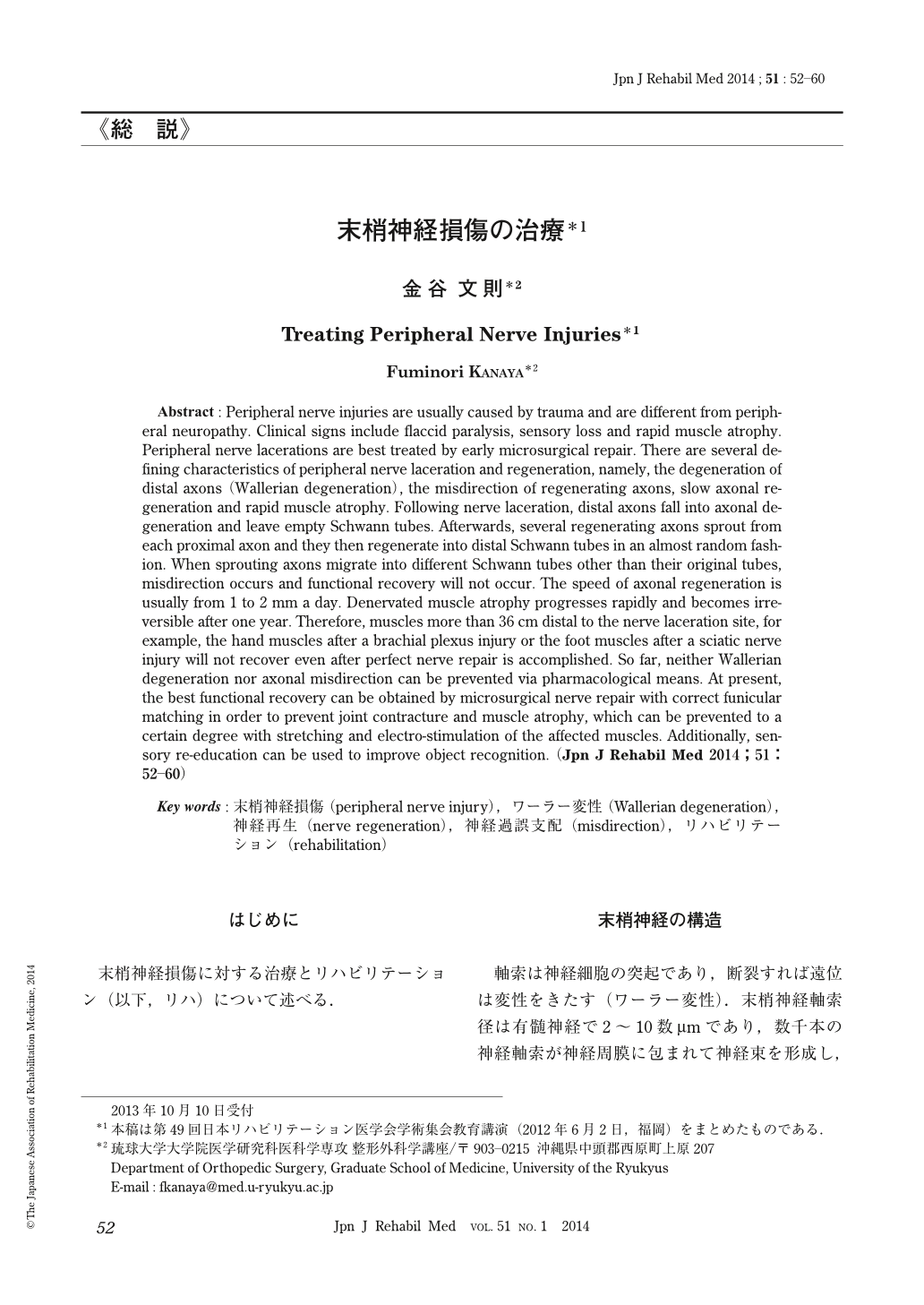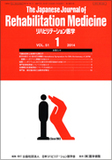Japanese
English
- 販売していません
- Abstract 文献概要
- 1ページ目 Look Inside
- 参考文献 Reference
はじめに
末梢神経損傷に対する治療とリハビリテーション(以下,リハ)について述べる.
Abstract : Peripheral nerve injuries are usually caused by trauma and are different from peripheral neuropathy. Clinical signs include flaccid paralysis, sensory loss and rapid muscle atrophy. Peripheral nerve lacerations are best treated by early microsurgical repair. There are several defining characteristics of peripheral nerve laceration and regeneration, namely, the degeneration of distal axons (Wallerian degeneration), the misdirection of regenerating axons, slow axonal regeneration and rapid muscle atrophy. Following nerve laceration, distal axons fall into axonal degeneration and leave empty Schwann tubes. Afterwards, several regenerating axons sprout from each proximal axon and they then regenerate into distal Schwann tubes in an almost random fashion. When sprouting axons migrate into different Schwann tubes other than their original tubes, misdirection occurs and functional recovery will not occur. The speed of axonal regeneration is usually from 1 to 2 mm a day. Denervated muscle atrophy progresses rapidly and becomes irreversible after one year. Therefore, muscles more than 36 cm distal to the nerve laceration site, for example, the hand muscles after a brachial plexus injury or the foot muscles after a sciatic nerve injury will not recover even after perfect nerve repair is accomplished. So far, neither Wallerian degeneration nor axonal misdirection can be prevented via pharmacological means. At present, the best functional recovery can be obtained by microsurgical nerve repair with correct funicular matching in order to prevent joint contracture and muscle atrophy, which can be prevented to a certain degree with stretching and electro-stimulation of the affected muscles. Additionally, sensory re-education can be used to improve object recognition.

Copyright © 2014, The Japanese Association of Rehabilitation Medicine. All rights reserved.


